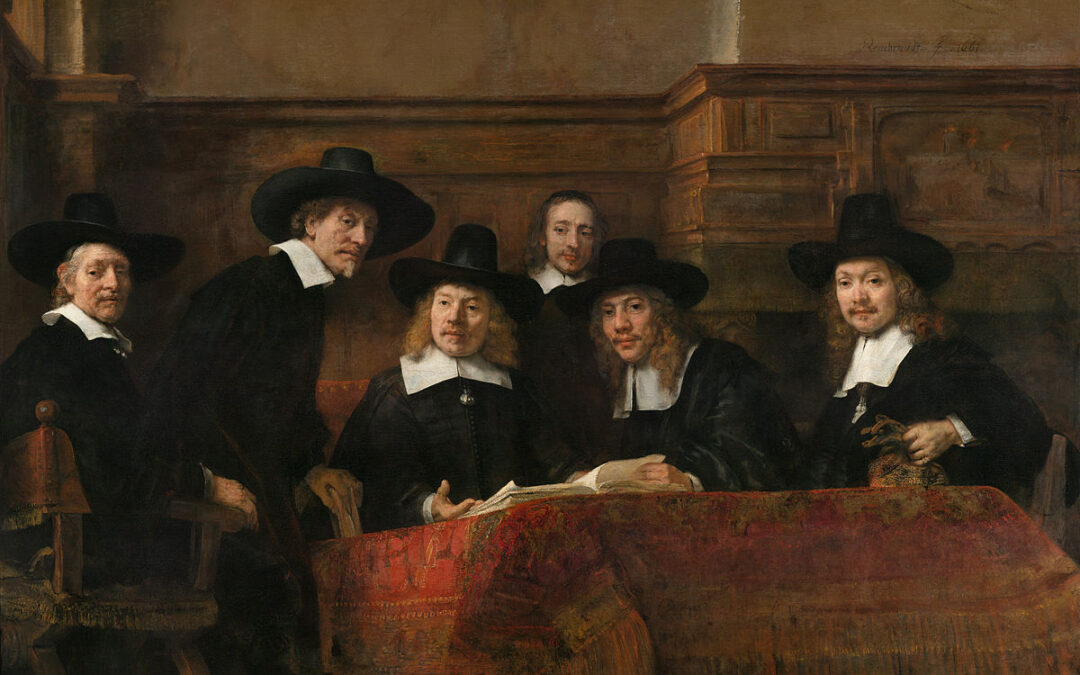“It was quite a sight! A dozen senior executives from a big, conservative financial services firm, all sitting on the floor in front of a painting, talking about what it could mean and why they think that.”
On a typical dreary November day, and Suzi and I were sitting in the café inside Boston’s Museum of Fine Arts. She had just left her job as Head of Design Thinking at Fidelity Investments and I was taking a sabbatical before deciding what would be next for my career. Introduced by a mutual friend, we decided to swap stories over lunch and a walk through one of the museum’s special exhibitions.
She was describing a Visual Thinking (VTS) session she had recently facilitated and the nearly instant impact it had on the way executives expressed themselves and communicated with each other. She saw them engage in a level of creative problem-solving and critical thinking that they hadn’t in the past.
Intrigued, I set off to learn more. What I discovered was a powerful, proven, and gasp fun way to help my clients navigate the ambiguous early days of innovation and embrace their inner curiosity and creativity.
Why should you care about VTS?
Imagine someone says to you, “If you and your team spend 1-2 hours with me each month for 9 months, I guarantee an improvement in your abilities to:
- Quickly gather and synthesize accurate and unique insights by listening deeply and re-phrasing what they heard ensure understanding
- Think critically and creatively by examining information or an idea from all angles, rethinking it, and deciding whether to keep, revise, or discard it
- Communicate more clearly, respectfully, and productively with a variety of people inside and outside the organization
- Work cross-functionally because they can apply critical thinking skills confidently to topics outside of their expertise
- Innovate and experiment because they have learned how to individually and as a team operate in uncertainty
- Provide more effective feedback by phrasing criticisms as questions and engaging in collaborative discovery and problem-solving conversations
Would you make the time commitment?
Now, what if they said, “All you have to do each month is sit together in a conference room and take part in a conversation. No travel. No additional expenses. Just turn off your email and your phone for one hour and have a conversation in a room you already pay rent on.”
Would you do it then?
Of course you would.
Because you’ve been to trainings that focus on only one of the items in the list above and those trainings are expensive, time-consuming, and not nearly as effective as they should be.
What is Visual Thinking Strategies (VTS)?
According to the book, Visual Thinking Strategies: Using Art to Deepen Learning Across School Disciplines, VTS “uses art to teach visual literacy, thinking, and communication skills – listening an expressing oneself.”
Philip Yenawine was the Director of Education at the Museum of Modern Art (MOMA) in New York from 1983 – 1993. During that time, he noticed that despite the museum’s efforts to organize and craft detailed explanations and interpretations for each piece of art, visitors would still ask lots of “Why?” questions and would remember little, if anything, from their visit.
Frustrated but curious, he and his team began studying developmental research and theory and discovered that what MOMA visitors needed wasn’t explanations, details, and facts, it was “permission to be puzzled and to think. Consent to use their powerful eyes and intelligent minds. Time to noodle and figure things out. The go-ahead to use what they already know to reflect on what they don’t; the first steps of learning.”
Philip and his team with MOMA partnered with cognitive psychologist Abigail Housen to develop and test a process now known as Visual Thinking Strategies (VTS).
In the 30 years since their initial experiments, Philip and Abigail’s work has been used in 28 countries and 58 museums, over 12,000 students have engaged in VTS discussions and 1,200 people have become trained facilitators.
How to do VTS
The secret to VTS’ effectiveness is in the facilitation so if you’re going to do this, invest in an expert facilitator. An expert facilitator is the only way to get the results listed above.
Here’s how a VTS session works:
- Facilitator shares a piece of art specially selected so that “the subjects are familiar… but they also contain elements of mystery.”
- Attendees take one minute to silently focus on the art
- Facilitator asks 3 questions over the hour:
- What’s going on in this picture?
- What do you see that makes you say that?
- What more can you find?
- As each individual answers a question, the Facilitator:
- Points at what is being observed
- Paraphrases what has been said
- Links what has been said to what others have said
- Facilitator wraps up the session by thanking everyone and sharing something s/he learned from listening. They do NOT give “the answer” because “this isn’t about right and wrong but about thinking and…that the students singly and together are capable of wonderful, grounded ideas.”
That’s it – 1 piece of art, 3 questions, and at least 5 major benefits if you commit to the process.
Seems like something worth sitting on an art gallery floor for, right?
To learn more, read Visual Thinking Strategies: Using Art to Deepen Learning Across School Disciplines by Philip Yenawine and visit the website Visual Thinking Strategies
